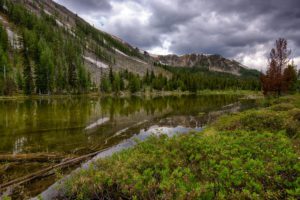Online Messenger #254
(view with pictures, as displayed in email)
California has a large amount of public lands including 18 national forests covering almost 21 million acres. This includes 79 Wilderness Areas covering 4.9 million acres, 4.4 million acres of Inventoried Roadless areas, and 29 Wild & Scenic Rivers. The Forest Service authorizes livestock grazing on 515 active grazing allotments covering some 3 million acres of these forestlands. With 130 federally listed animals (91 Endangered, 39 Threatened), 186 federally listed plants (139 Endangered / 47 Threatened), about 1,000 sensitive species in California many of occurring on Forest Service lands, and abundant cultural sites, WWP’s California office addresses a plethora of important conservation issues!
Just last year, WWP and a coalition of our allies won a settlement from a protracted legal challenge against the Forest Service’s expedited and insufficient environmental reviews on 35 grazing allotments in California. The Forest Service had “categorically excluded” these permits from review under the National
Environmental Policy Act (NEPA). The settlement sends the agency back to the drawing board to take a fresh, hard look at the impacts of livestock grazing authorizations.
On the Mendocino National Forest, the appeal brought by WWP and the Environmental Protection Information Center (EPIC), caused the Forest Supervisor to withdraw her grazing decision for the Etsel allotment on the Covelo Ranger District. About half of the Etsel Allotment is within the recently designated Yuki Wilderness Area and a 12-mile stretch of the Black Butte Wild and Scenic River forms the allotment’s northeastern border. Home to rare plants such as Stebbins lewisia, the Etsel Allotment also provides habitat to imperiled animals including northern spotted owls, Pacific fishers, and threatened salmon species.
In another recent appeal win, the Los Padres National Forest Supervisor withdrew her grazing decision for the Happy Canyon Allotment in response to an appeal by WWP and our allies at Los Padres Forest Watch and the Center for Biological Diversity. The allotment provides habitat for red-legged frogs as well as other listed and sensitive species. The Happy Canyon Allotment also contains important cultural resources. The allotment is heavily weed-infested, and the agency based its decision about grazing levels on the availability of non-native filaree! Livestock grazing only exacerbates weed infestation.
We continue our work to protect the last remaining sage-grouse population on the Modoc National Forest. In 2008, WWP’s appeal forced the agency to withdraw its decision for the Tucker allotment and since then the forest has made repeated attempts to develop new fences and water developments without full environmental review. WWP is diligently working to get the Forest to get this right and protect this important habitat.
The Inyo National Forest is home to bi-state sage-grouse, endangered Sierra Nevada bighorn sheep, rare amphibians, and the famed Golden Trout Wilderness on the rugged Kern Plateau. Though some of the grazing allotments are currently being rested, cattle remain in many of the meadows. WWP is making sure that a full environmental review of livestock impacts will be conducted before further resource damage is authorized.
This is just some of WWP’s work on Forest Service lands in California but WWP also works on Bureau of Land Management allotments, Endangered Species (especially the desert tortoise and wolves), and other public land management challenges in California. While WWP currently has just one staff person focused on this large state, more funds and membership support additional would enable us to add to our state team and become even more effective in California.






